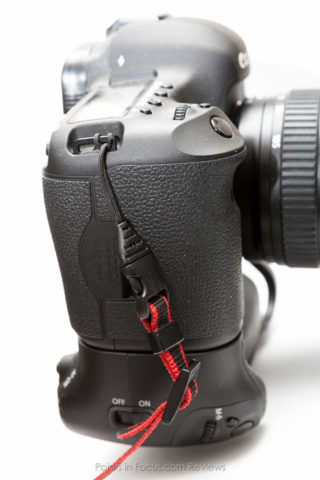Op/Tech USA’s Mini QD Loops Review
Some time ago, I wrote about my continuing frustration with finding an ideal solution to putting a quick release camera strap on a Canon body. Shortly after that, I wrote about Op/Tech’s Adapt It’s. I’m back again looking at another Op/Tech product, this time the Mini QD Loops.
Unlike the Adapt Its, the Mini QD dangle a bit, but they’re both short and small enough that they don’t get in the way like most everything I’ve tried previously.
Going into this, I had two issues that I was concerned about; the strength of the connector, considering the loop is quite thin material, and the ability for the connector to resist coming disconnected when under load (i.e. if you bump one of the release pins).
The good news is that the connectors seen more than up to the task in both cases.
Strength wise, Op/Tech USA claims they’ll support a load of 44 pounds. I was skeptical given that they’re just little bits of molded plastic, so I decided to put one to the test, at least as much of a test as I had weight handy to test it with.

As you can see in the image above, the single QD loop is holding a 30 pound load. On examining the Mini QD loop after the test, there was no apparent damage or stretching at all indicating that it wasn’t being stressed significantly at all. With 2 on a camera, that’s at least 60 pounds combined load/shock resistance, which is more than enough to make me happy given that a fully loaded EOS-1D X + 70-200/2.8L IS II, and a 600EX-RT flash comes in under 10 pounds giving more than a 6x safety factor.
Certainly, they’d be stronger if they used a nylon-webbing loop instead of a thin cord. That said, I’m not sure it would make much of a difference. And for those interested, Op/Tech does offer something more akin to that in the Uni-Loop, though it’s optimized for their camera straps which place the connections asymmetrically (one side is male, the other side is female), and the connectors are considerably larger than the 3/8” loop the Mini QD loops provide, which matches properly with most straps anyway.
The second concern was their ability to resist accidental disconnecting. To which they do an admirable job. The mating edges of the male clip are beveled so that as the quick release connector is placed under tension, it becomes increasingly difficult to release. Under the weight of a camera and lens, I don’t really see them becoming accidentally disconnected.

Finally, the female quick release connector is sized to accept any 3/8” camera strap neatly, meaning you can use whatever strap you like without having it slide around on the end of an overly wide quick release connector.
Aside from my desire to have the Mini QD Loops provide a thicker loop to attach to the camera, there’s very little by the way, of complaints I have for these. They really do seem to be the solution, or at least the best solution I’m going to find without building it myself, to the problem of putting a quick release strap on a Canon camera without long tails to get in the way.
Comments
There are no comments on this article yet. Why don't you start the discussion?